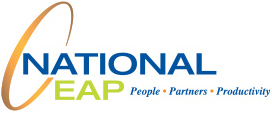
As seen in Long Island Business News, January 10th, 2020
Performance appraisals: At one end of the spectrum, they can be part of an organization’s plethora of tools to motivate employees and help them set and attain goals to grow with the firm.
At the other end, they can be ineffective, or worse, deemed disrespectful by the very people who stand to gain the most.
Many organizations fall somewhere in the middle.
Still others are doing away with the annual review altogether, opting instead for regular check-ins to ensure employees are on-track to hit their goals.
Yet every employer can find a way to foster productive discussions with employees. These conversations can inspire and motivate, and also address any unacceptable behavior, all in real time.
It’s part of a prescription for organizations to thrive.
These dialogs “can be a positive and rejuvenating experience when handled correctly by the manager,” said Aoifa O’Donnell, CEO of the Hauppauge-based human resources consulting company National EAP, and an expert in employee behavior.
But whether an organization opts for the annual review or a more frequent check-in, preparation is essential, experts say.
“The leadership should be cognizant of what it’s trying to accomplish,” said Rick Gibbs, a performance specialist for Insperity, which has offices in Jericho, and provides human resources and administrative services to small and medium-sized businesses.
Depending on an organization’s priorities, assessments can be instrumental when determining raises and bonuses, promotions, resource allocations, or new training. So whether conducted annually or more frequently, performance appraisals are likely here to stay.
For employers with “strong leadership,” performance appraisals “are a summary tool of all prior conversations” that take place throughout the year, O’Donnell said.
And while both managers and employees may concede that they dread performance appraisals, there are ways to enhance the process.
It starts with groundwork, allowing time for both the manager and the employee to weigh in.
That preparation “sends the right signal to the employee that this is an important part of the process as a company, and yours in growth,” said Jose Santiago, the human resources compliance manager and corporate counsel at Alcott HR, a human-resources outsourcing services provider with offices in Farmingdale.
Many organizations have the process begin with the employee writing a self-review. And that can be a benefit, Santiago said.
In these self-assessments, for example, employees may point to highlights from earlier in the year that serve as a reminder for the manager, Santiago said.
It also “allows a manager to get a picture of where” employees see themselves, and to determine if “a manager is in-line with the employees’ insights as to how they are progressing,” Santiago said.
And “it allows the manager to recognize ahead of time if there are big disagreements in a particular area,” he said.
And increasingly, companies are selecting periodic check-ins over formal reviews, the Society of Human Resources Management reports.
“It does seem to be a trend,” Gibbs said.
These employers like “the idea of staying in closer touch with people on a regular basis,” he added. “It may be in a less formal way, but the communication may be more useful in the moment – and closer [to] the performance, so you don’t wait for end of the” review period to address a particular issue.

Nuanced conversations
Conversations surrounding performance must be nuanced, experts say.
O’Donnell said her firm coaches clients “to be effective managers and engage in growth discussions throughout the year and to not be afraid to have conversations when unacceptable behavior occurs.”
“Otherwise you can have a problem when you suddenly drop it on an employee,” she said.
Constructive feedback is key.
Santiago recommends “SMART goals,” (that is, goals that are specific, measurable, attainable, relevant and time-bound). This process can include a mid-year progress report, as part of a check-in.
This provides opportunity “to see where we are with those goals, and give a nudge if someone is slacking in a particular area” and evaluate if goals or methods to attain them need to be reassessed, Santiago said.
He recommends starting performance appraisals on a positive note, followed by discussing an area that could benefit with improvements and how to address them. Then conclude with something else positive, he said, ending the conversation on a motivational note.
Still, managers may find the process, whether conducted annually or throughout the year, stressful, O’Donnell said, “especially if they are avoiding conflict.”
But that, she said, can lead to the “normalization of deviance,” where unacceptable behavior isn’t immediately pointed out and “nine months later the employee is hit with a negative score” during an assessment.
It’s the nuanced conversations, starting with leaders and managers, who through a coaching approach, can provide a motivational environment that is positive and constructive and that holds employees accountable through the year, she said.
Still, some discussions may point to a manager’s flaw.
“But if you’re a good manager of people and interested in performance development of your team, getting feedback” can be valuable and help improve a manager’s skills, Santiago said.

Transparency, protocol
The process should be transparent, experts say.
“Reviews should feature a checklist of items even before you sit down with the employee and conduct a review,” Santiago said.
Gibb likened it to a “scoreboard of objective data” that is provided in advance, where everyone understands the criteria.
The process can serve as a roadmap, establishing expectations and how they will be achieved, Santiago said.
“There should be no surprises that found [the employees’ behavior is] unacceptable or not up to par,” where the supervisor “never talked about it until the review,” O’Donnell pointed out.
Otherwise, “it can kill morale,” she added.
Ideally, she said, employees should be able to write the review themselves, and both staffer and manager should be clear on the path toward development.
Yet in the instances where an employee doesn’t show improvement as expected, an organization has the documentation that shows where challenges were addressed and didn’t bet better, setting up a trail, Santiago said.
Experts say organizations can customize the process, and that may be worth considering if assessments aren’t generating the desired results.
“If you have a process that everyone is concerned about and doesn’t take seriously, change it,” Gibbs said. “Pull it apart. Get input on how it could be better. And ask what methods could we do to make it better.”
Here, caution is key, experts warn.
Don’t necessarily leap to a method someone else likes or that someone is trying to sell, Gibb said.
Instead, he said, “think about what’s appropriate for your organization.”


